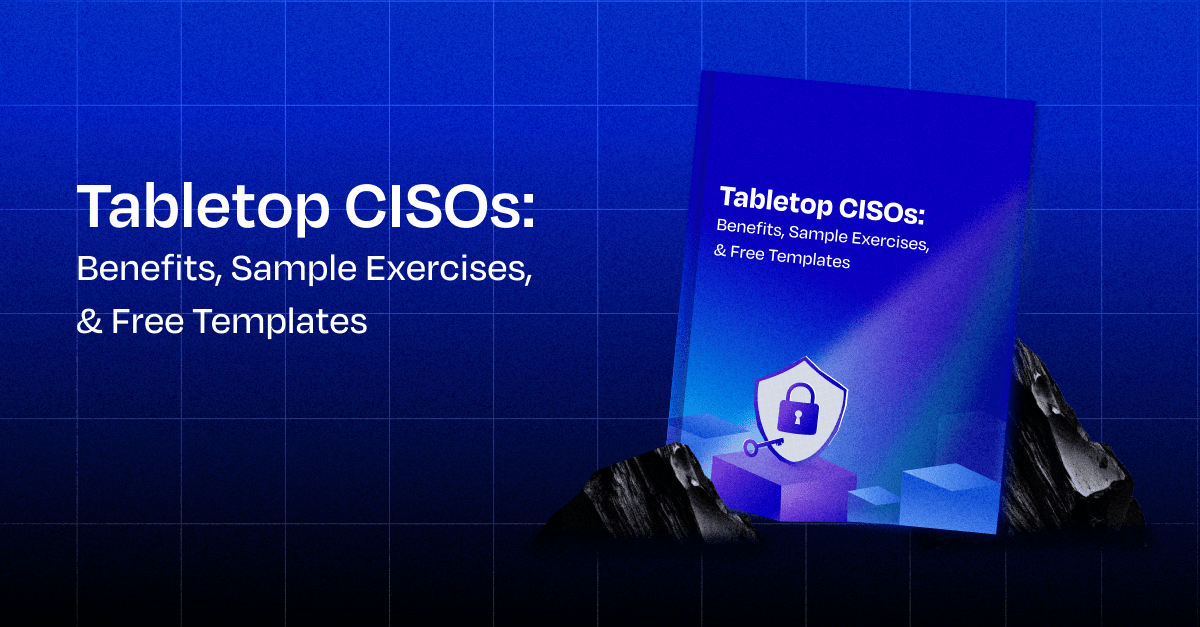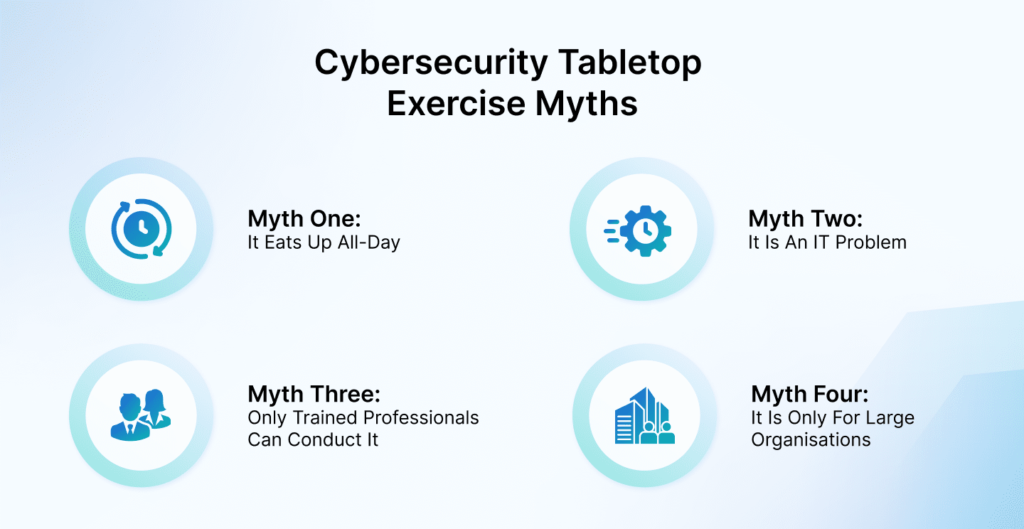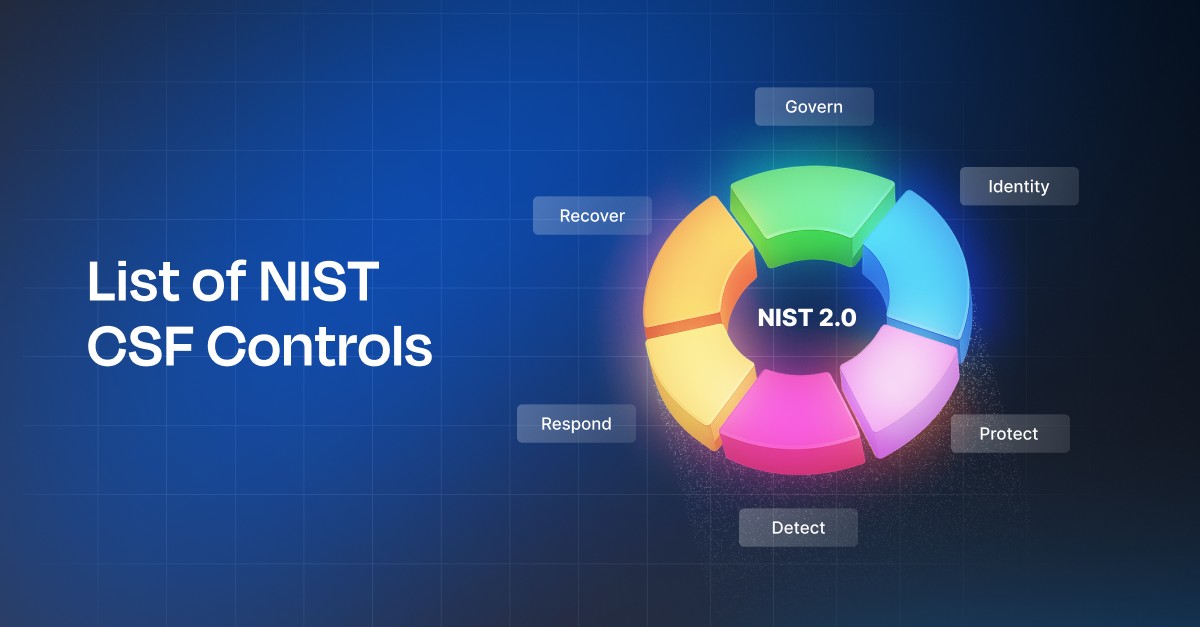Tabletop CISOs: Benefits, Sample Exercises, & Free Templates
Anwita
Jan 31, 2025
A survey conducted by the Ponemon Institute highlighted skill shortages as a key factor contributing to a data breach’s cost. All research and data on cybersecurity point to a common finding: the number of attacks is going up each year and shows no signs of slowing down. These facts underscore the importance of skilled CISOs in an organization.
Keep reading to learn the importance of a tabletop exercise for CISOs and how to conduct it within your organization using ready-to-use, customizable templates.
But first, what’s a tabletop exercise anyway?
A tabletop exercise is a training session that prepares participants for a real-life crisis or emergency situation. This training exercise presents a hypothetical event to the members, who evaluate the problem statement and develop potential solutions after an interactive discussion session.
The National Institute of Standards and Technology (NIST) defines a tabletop exercise as “ A discussion-based exercise where personnel with roles and responsibilities in a particular IT plan meet in a classroom setting or in breakout groups to validate the content of the plan by discussing their roles during an emergency and their responses to a particular emergency situation. A facilitator initiates the discussion by presenting a scenario and asking questions based on the scenario.”
Why should you conduct one?
Tabletop exercises serve as a powerful tool against costly breaches. It sufficiently prepares security teams to identify gaps in the infrastructure, implement the proper measures to mitigate them and ensure business continuity without impacting key operations.
Participating in mock emergency situations helps infosec and compliance teams prepare for actual incidents. Doing so gives the board and stakeholders confidence in the team’s capability to mitigate security breaches.
When breaches occur, security teams often panic, especially when a particular type of attack happens for the first time. Teams find themselves underequipped and overwhelmed, which allows the infection more time to spread and damage critical systems. The solution to unprecedented chaos like this is that CISOs should include tabletop exercises as part of their training program.
First, let’s bust some myths
Despite a long list of pros, tabletop exercises are not as widely adopted as they should be. This is primarily because of certain myths and misconceptions around it.

Myth one: It eats up all-day
While some organizations plan to run training workshops for an entire day, a tabletop exercise for CISOs typically does not exceed three to four hours. This should allow ample time to discuss and debrief while maintaining engagement. Many organizations conduct shorter one-hour drills where the focus is on addressing the critical risks only.
Myth two: It is an IT problem
Given that tabletop exercises for CISOs focus on the technical aspects of an issue, they are not exclusive to IT. Non-technical issues like communications, legal, and reporting are also part of the incident response process. Therefore, a successful tabletop exercise should prepare every key stakeholder to ensure they understand their roles and perform efficiently under pressure.
Myth three: Only trained professionals can conduct it
Hiring third-party organizers is one way to go, but there is no reason why tabletop exercises cannot be conducted internally. We recommend running three internal tabletop exercises annually and bringing in an external expert for a fourth session.
Internal exercises help teams build muscle memory, refine internal processes, and improve coordination. External facilitators bring fresh perspectives, unbiased evaluations, and insights into emerging threats. They also stress-test teams in ways internal facilitators may overlook, ensuring a realistic assessment of preparedness.
Myth four: It is only for large organizations
No organization is too small for cybercriminals; threat actors target smaller businesses as large enterprises are generally better equipped with security teams and technology to handle threats.
A well-designed tabletop exercise can expose vulnerabilities and improve response strategies even with just three participants. The key is to keep the exercise relevant and invite only essential participants. This is because when unnecessary staff joins, it leads to disengagement and reduces the exercise’s effectiveness.
Tabletop exercise samples for CISOs
We have created a few sample exercises using real-life-like scenarios to help you get started. These exercises are meant to help your team prepare for different risk scenarios and prepare a response.
Exercise 1: Quick fix
Alex, your network administrator, is overworked and underpaid. His bags are packed for a long-awaited family vacation to Hawaii when he’s assigned to deploy a critical security patch. Rushing to catch his flight, Alex creates an installation file and pushes the patch live without testing.
Shortly after, Jamie, the on-call IT technician, starts receiving urgent calls—no one can log in to the system. The issue? The untested patch has caused authentication failures across the network.
Response & Discussion Questions:
- How should Jamie respond?
- Does the on-call technician have the necessary skills to troubleshoot and resolve this issue?
- If not, is there a clear escalation process to involve senior IT staff or third-party support?
- Does the organization have a formal change management policy?
- Are employees trained in proper change control procedures to prevent rushed, untested deployments?
- Are there disciplinary measures in place when policies are ignored, potentially causing downtime or security risks?
- Can the organization roll back the patch?
- Does the IT team have a rollback plan if a patch causes system failures?
- Are backups available to restore services quickly without significant disruptions?
Exercise 2: Malware infection
Scenario: An employee used the company’s digital camera for work-related tasks. While doing so, they took a scenic photograph and later transferred it to their computer using the camera’s SD card. Unbeknownst to them, the SD card became infected with malware from their personal device. When they reinserted the SD card into a company computer, the malware spread to the organization’s system, compromising security.
Response and discussion questions:
- Who needs to be notified within the organization?
- Should the security team, IT department, or management be informed immediately?
- Are there protocols in place for reporting potential security incidents?
- How should the organization detect and respond to the malware infection?
- What tools and monitoring systems can identify the infection source?
- What immediate actions should IT take to isolate the affected systems and contain the spread?
- What other devices could introduce similar threats?
- Are USB, external hard drives, or personal mobile devices regularly connected to company systems?
- How should removable media be controlled to minimize security risks?
- What actions should management take?
- Should additional security training be required for employees?
- Is disciplinary action necessary for failing to follow security protocols?
- How can this be prevented in the future?
- Does the organization have a clear policy regarding personal device use with company systems?
- Should endpoint protection software automatically scan external storage before allowing access?
- Do policies extend to all removable media, including SD cards, USBs, and external drives?
Exercise 3: Unplanned attack
Scenario: a hacktivist group has issued a threat against your organization following an incident involving allegations of excessive force by law enforcement. The nature of the attack is unknown, leaving the organization vulnerable to various cyber threats. Taking proactive steps to strengthen security is critical.
Response and discussion questions:
- What are the possible threat vectors?
- Could the attack involve denial-of-service (dos), phishing, social engineering, or data leaks?
- Has the organization evaluated past hacktivist group incidents to anticipate likely attack methods?
- How can threat intelligence help prioritize defenses?
- Have common attack vectors from the past month been analyzed?
- Are there other methods to assess and prioritize the most pressing threats?
- Is the patch management system up to date?
- Are all systems, applications, and security tools patched to address known vulnerabilities?
- Has a review been conducted to ensure no critical security gaps exist?
- Can intrusion detection and prevention be enhanced?
- Is real-time monitoring of intrusion detection and intrusion prevention systems (ids) (IPS) possible?
- If internal resources are insufficient, can third-party organizations assist with monitoring?
Tabletop exercise templates for CISOs
The Cybersecurity and Infrastructure Security Agency (CISA), an official website of the U.S. Department of Homeland Security, shared a comprehensive set of resources and practical training scenarios to assist organizations conduct their tabletop exercises. You can download them below to get started.
| Exercise name | Objective | Template |
| COVID-19 recovery step situation | Examine organizational recovery plans and the coordination of recovery operations across stakeholder groups. | https://www.cisa.gov/sites/default/files/2023-02/covid-19-recovery-ctep-situation-manual-iseb-508-012022.docx |
| Crowd surge situation | Review intelligence and information-sharing capabilities between public and private sector entities before and during an incident. | https://www.cisa.gov/sites/default/files/2023-02/crowd-surge-ctep-situation-manual-iseb-508-052022.docx |
| Defense industrial base | Review pre-incident and incident response information-sharing procedures between military branches, military service components, installation command, corporate leadership, employees, and emergency responders. | https://www.cisa.gov/sites/default/files/2023-01/defense-industrial-base-ctep-situation-manual-iseb-082021.docx |
| Chemical sector cyber attack | Review intelligence and information sharing and dissemination processes in relation to a credible threat to domestic critical infrastructure owners/operators | https://www.cisa.gov/sites/default/files/publications/Chemical%2520Sector%2520Cyber%2520CTEP%2520%2528APR%25202021%2529%2520Situation%2520Manual_FINAL_508.docx |
| Insider threat | Evaluate <Organization’s> supply chain-oriented threats and the impact on organizational cyber resilience. | https://www.cisa.gov/sites/default/files/2025-01/Insider-Threat-CTEP-Situation-Manual-092023-508.docx |
| Ransomware situation | Examine the response capabilities of <Organization> during a significant cyber incident. | https://www.cisa.gov/sites/default/files/2025-01/Ransomware-CTEP-Situation-Manual-092023-508.docx |
| Vendor supply chain compromise | Examine the response capabilities of <Organization> during a significant cyber incident impacting the supply chain. | https://www.cisa.gov/sites/default/files/2025-01/Vendor-Supply-Chain-Compromise-CTEP-Situation-Manual-082024-508.docx |
All-in-one security and compliance tool for CISOs
Risk and security management can become chaotic due to inefficiencies stemming from multiple, poorly coordinated systems, too many manual processes, and budget constraints.
The solution is an all-in-one automation tool to manage risk, security controls, and compliance.
Sprinto combines security automation and CISO management into one powerful tool, giving your security team full control and visibility over risks and compliance.
Here’s how Sprinto strengthens your cybersecurity program:
- Automates risk management using integrations and a risk library to identify, score, and evaluate risks against industry benchmarks.
- Continuously monitors security gaps, recommends fixes, and automates evidence collection to keep compliance effortless.
- Provides a centralized dashboard for real-time insights into risks, progress, and compliance status.
- Offers expert guidance from in-house security specialists to implement controls, prevent non-compliance, and strengthen your security posture.
Connect to our experts to get a live demo.


Use Sprinto to centralize security compliance management – so nothing
gets in the way of your moving up and winning big.





















